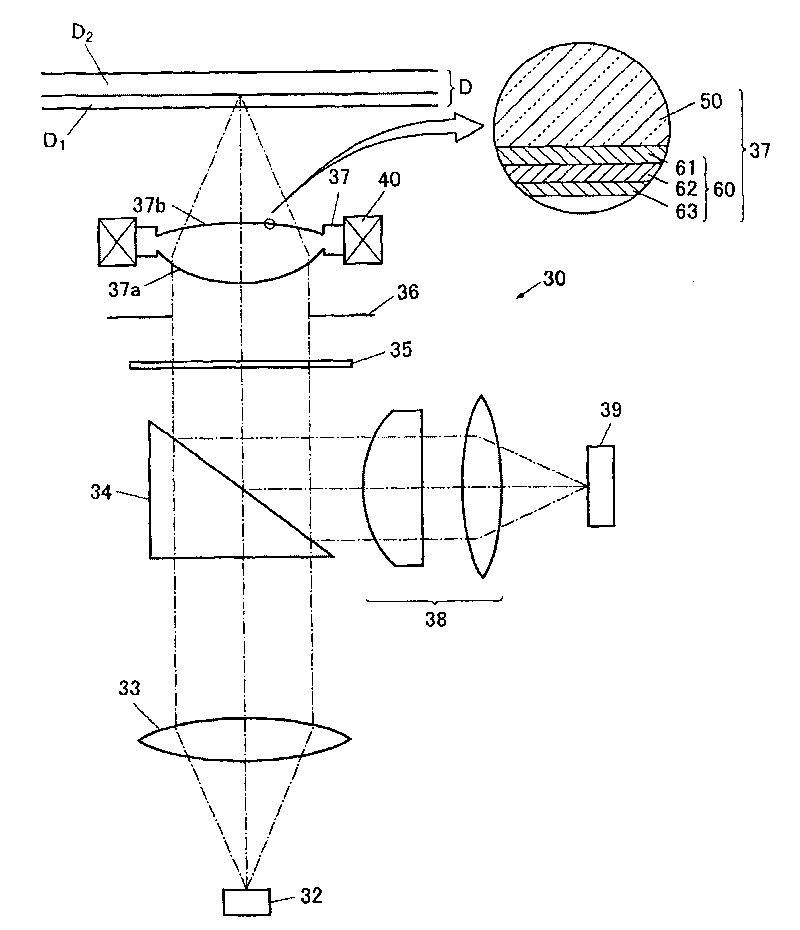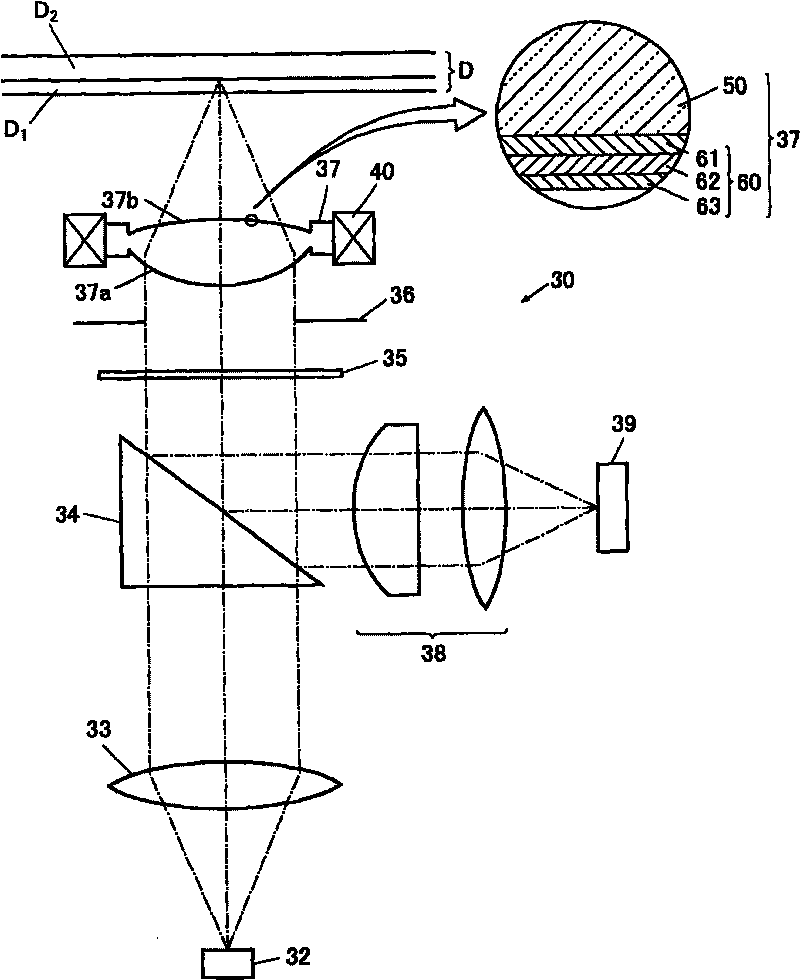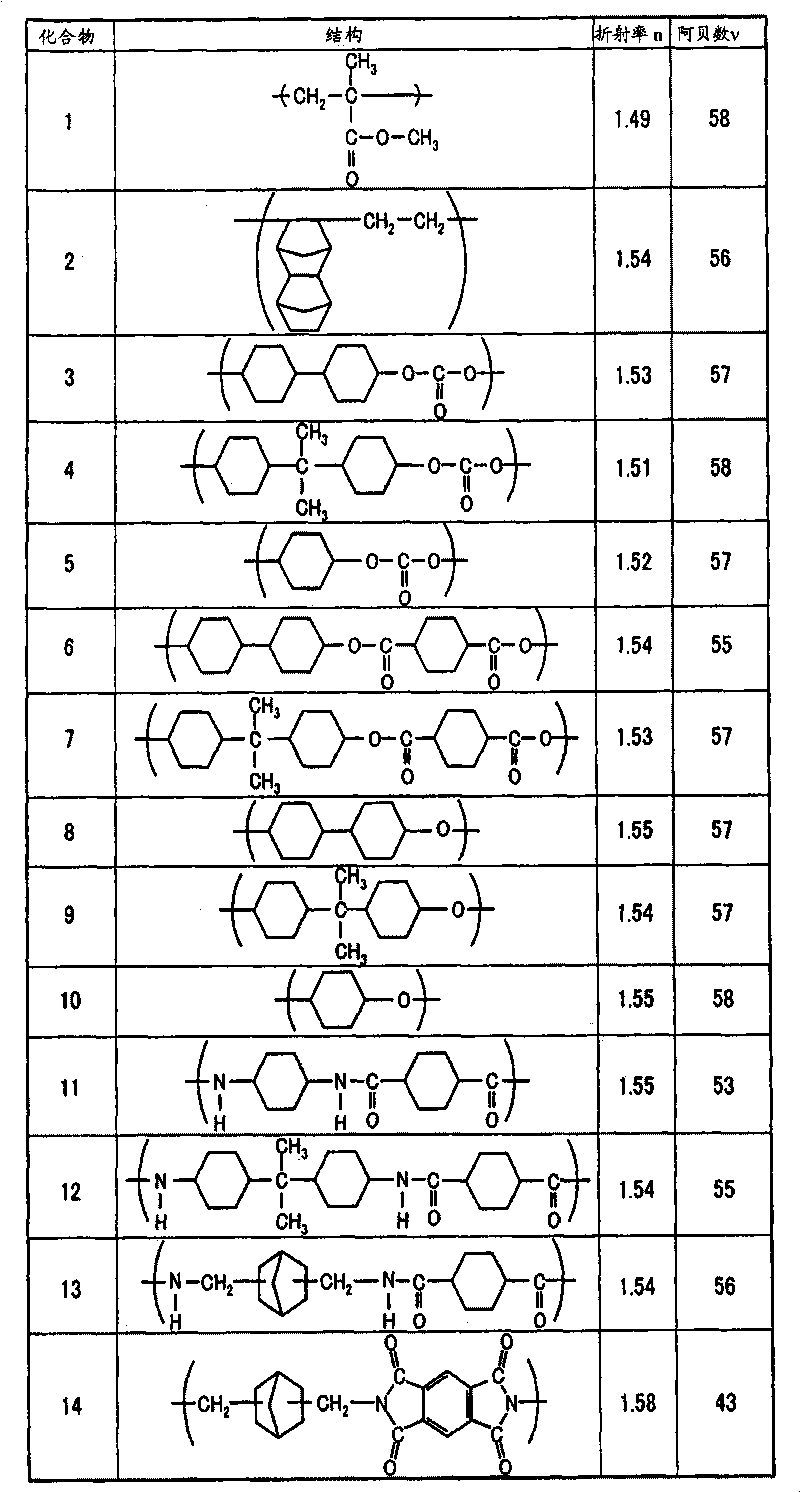Optical element and production method of the same
A technology of optical components and manufacturing methods, applied in the fields of optical components, optical head manufacturing, optical recording/reproduction, etc., to achieve the effects of suppressing light absorption, suppressing aberration changes and transmittance decline, and improving light transmittance Effect
- Summary
- Abstract
- Description
- Claims
- Application Information
AI Technical Summary
Problems solved by technology
Method used
Image
Examples
Embodiment 1
[0066] (1) Manufacturing of samples
[0067] On the incident side and the outgoing side surface of a resin lens substrate (objective lens for blue light) manufactured using a cyclic olefin resin (Mitsui Chemicals APBL Co., Ltd.), Si x o y Anti-reflective film composed of a single layer.
[0068] The anti-reflection film of each sample was formed by the vacuum evaporation method. When forming each of these films, while appropriately changing the introduction pressure of the evaporation source and oxygen, five types of samples were formed. According to the conditions, "Sample No. 1" was formed. ~5". Table 2 shows the vapor deposition conditions of samples No. 1 to 5. Table 2 shows the film thickness of the antireflection film, and the composition ratio r(Si x o y y / x values in ).
[0069] In addition, the composition ratio r in Table 2 is a value calculated from the amount of element present obtained by X-ray photoelectron spectroscopy (XPS) using ESCALab200R manufacture...
Embodiment 2
[0081] (1) Manufacturing of samples
[0082]On the surface of the incident side and the emitting side of the resin lens substrate (objective lens for blue light) manufactured using the cyclic olefin resin (Mitsui Chemicals APEL) manufactured in the same manner as in Example 1, antireflection was formed with the film thicknesses shown in the following Table 3, respectively. membrane. In Table 3, the layer closest to the substrate side is regarded as the lower layer, and the layer farthest from the substrate side is regarded as the upper layer, and the same composition ratio r(Si x o y y / x value in ) silicon oxide film. As the intermediate layer, a zirconia layer having a refractive index of 1.93 for light of 400 nm was used. As the design wavelength (the wavelength at which the reflectance becomes the lowest), consider the shape of the lens surface and the total transmittance, and set it as 470nm on the incident surface side (S1 surface side) and 440nm on the exit surface si...
PUM
| Property | Measurement | Unit |
|---|---|---|
| refractive index | aaaaa | aaaaa |
| refractive index | aaaaa | aaaaa |
| refractive index | aaaaa | aaaaa |
Abstract
Description
Claims
Application Information
 Login to View More
Login to View More - R&D Engineer
- R&D Manager
- IP Professional
- Industry Leading Data Capabilities
- Powerful AI technology
- Patent DNA Extraction
Browse by: Latest US Patents, China's latest patents, Technical Efficacy Thesaurus, Application Domain, Technology Topic, Popular Technical Reports.
© 2024 PatSnap. All rights reserved.Legal|Privacy policy|Modern Slavery Act Transparency Statement|Sitemap|About US| Contact US: help@patsnap.com










